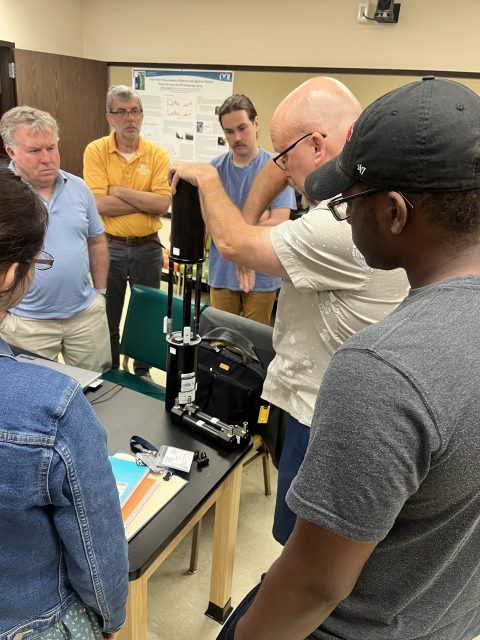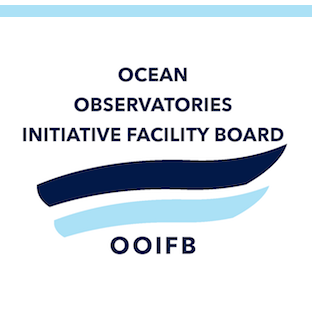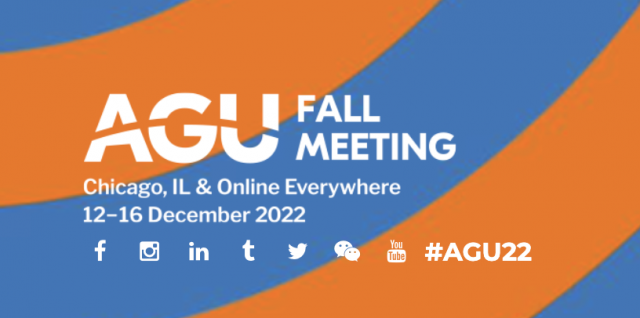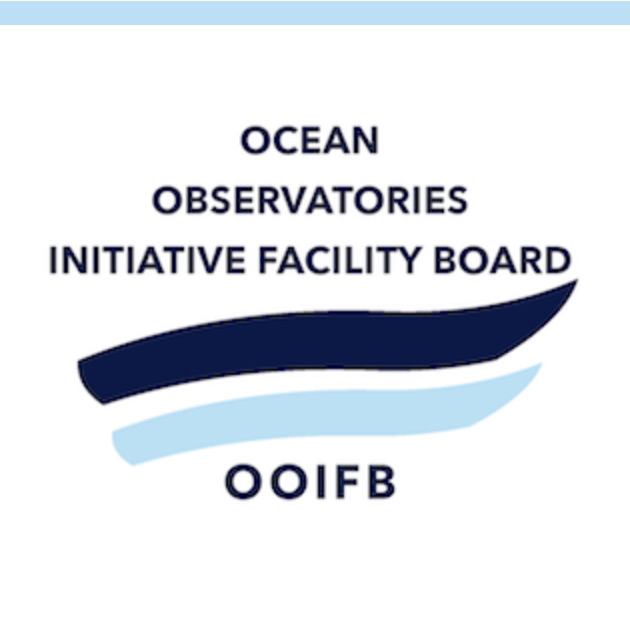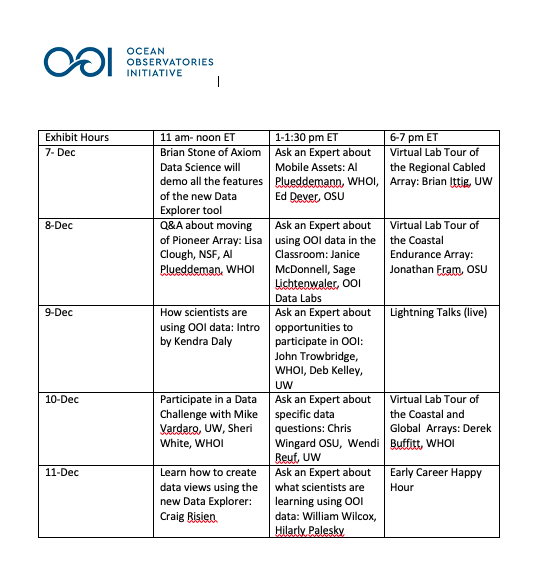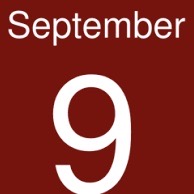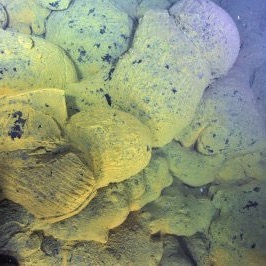workshop
Sensor Summer School Curriculum and Video Available
The Ocean Observatories Initiative Facility Board (OOIFB) hosted a 2023 summer school (July 17-21, 2023) at Oregon State University in Corvallis, Oregon that focused on OOI optical attenuation and absorption data. A mix of advanced graduate students, post-doctoral fellows, and early career scientists participated in this hands-on learning experience about how to access, analyze, and interpret data from the Sea-Bird AC-S. Data from the AC-S is used to characterize the absorption and scattering of light in seawater, which provides information on phytoplankton biomass in the measured ocean region.
So others may benefit from what was learned, the curriculum is available online here.
Read More
Bio-Optics Sensor Summer School Applications Open
Are you interested in using OOI’s optical attenuation and absorption data in your research? Have you ever faced challenges finding and interpreting this type of data? If so, we hope you will consider applying for the 2023 OOI Bio-Optics Sensor Summer School.
The Ocean Observatories Initiative Facility Board (OOIFB) will host the summer school on July 17-21, 2023 on the campus of Oregon State University in Corvallis, OR. The course will focus on learning how to analyze and interpret the Sea-Bird AC-S measurements of optical attenuation and absorption. The AC-S is a hyperspectral instrument used to characterize the way seawater absorbs and scatters light and total scattering can be derived for living and detrital particles in the ocean. The OOI Program deploys the Sea-Bird AC-S on most of the OOI platforms, including coastal, cabled, and high latitude moorings.
Marine phytoplankton play an important role in ocean ecology and global biogeochemical cycles. The optical attenuation and absorption data from the AC-S provides information on the relative biomass of different phytoplankton size classes and phytoplankton functional types. In addition, other biogeochemical proxies, such as particulate organic carbon, may be estimated. The AC-S data also may be used to validate remote sensing measurements. These observations will be useful in addressing science questions covered by several OOI research themes including:
- Climate Variability, Ocean Circulation, and Ecosystems.
- Coastal Ocean Dynamics and Ecosystems.
- Turbulent Mixing and Biophysical Interactions.
About 25 advanced graduate students, post-doctoral fellows, and early career scientists will be selected as participants for the summer school. Other career level researchers will be considered, based on space availability. Participants should have a general understanding of oceanography/biology. Only applicants from U.S institutions can be considered. Participation will be in-person only and all selected students must be available to attend all days of the course. Funding for reimbursement of travel expenses, accommodations, and meals is offered.
Additional details about the summer school program, as well as a link to the application form are available here.
Please submit your application by the end of the day on February 28, 2023. Selections and notifications will be made in March. The selection process will strive to maximize diversity of the summer school program with regard to race and ethnicity, gender, ability, sexual orientation, geography, and research experience.
OOI at AGU 2022
[media-caption path="/wp-content/uploads/2020/10/agufront2-scaled-e1603490292321.jpeg" link="#"]OOI will be very much present in person at the AGU Fall Meeting 2022. Come visit us at the OOI booth #1321 in the exhibit hall and mark your calendar for the sessions below. [/media-caption]
This year, OOI will be in person at the AGU Fall Meeting 2022 in Chicago from December 12-16. We will have a booth (#1321) in the exhibit hall and will be in person to present sessions and posters. The following is a compilation of OOI-related presentations at this year’s fall meeting. If we’ve missed any OOI-related sessions, please contact dtrewcrist@whoi.edu and we will be happy to add them. Hope to see you in person this year! Share your AGU news at #AGU22.
Monday, 12 December 2022
08:00 – 09:00 CST(09:00 – 10:00 EST) Online Only
V11B-02 Detecting the syn- and after-eruption process of the Axial Seamount with ambient noise interferometry
Chao J Lee, Nanjing University, Nanjing, China and Youyi Ruan, Brown University, Providence, United States
09:00 – 12:30 CST (10:00 – 13:30 EST) McCormick Place – Poster Hall, Hall – A
V12B-0045 Developing a Catalog of Automated Focal Mechanisms for Microearthquakes at Axial Seamount Based on Waveform Correlation
Maochuan Zhang1, William S D Wilcock1, Felix Waldhauser2, Kaiwen Wang2, David Paul Schaff2, Maya Tolstoy1 , and Yen Joe Tan3, (1)University of Washington, School of Oceanography, Seattle, WA, United States, (2)Lamont-Doherty Earth Observatory, Columbia University, Palisades, NY, United States, (3)Chinese University of Hong Kong, Earth system science, Hong Kong, China
09:16-09:23 CST (10:16-10:23 EST) McCormick Place – N426c
ED12A-03 Accessible Oceans: Exploring Ocean Data Through Sound
Amy S Bower, Woods Hole Oceanographic Institution, Woods Hole, MA, United States, Jon Bellona, University of Oregon, School of Music and Dance, Eugene, OR, United States, Jessica Roberts, Georgia Institute of Technology, College of Computing, Atlanta, GA, United States, and Leslie Smith, Your Ocean Consulting, Knoxville, TN, United States
09:43-09:53 CST (10:43-10:53 EST) McCormick Place – S103cd
S12C-05 Listening to Fin Whales with Distributed Acoustic Sensing: A Study in Opportunistic Acoustics
Agatha Podrasky, David Podrasky, Megan Everingham, Noah Clayton, and Thomas Coleman, Silixa LLC, Missoula, MS, United States
15:00-18:00 CST Exhibit Hall – Visit OOI’s Booth #1321
18:30-19:30 CST (19:30-20:30 EST) McCormick Place – S106a Note: Attendance at this event can be either in person or virtual.
TH15B Ocean Observatories Initiative Facility Board (OOIFB) Town Hall
Annette M DeSilva, University of Rhode Island, Graduate School of Oceanography, Narragansett, RI, United States and Kendra L Daly, University of South Florida, College of Marine Science, St. Petersburg, FL, United States
Tuesday, 13 December 2022
08:00 – 09:00 CST (09:00 – 10:00 EST) Online Only
OS21B-09 Centimeter-Scale Mapping of Four Hydrothermal Vent Sites at Axial Seamount: Low-Altitude Surveys Combining Multibeam Sonar, Lidar, and Color Stereo Photography
Jennifer Brophy Paduan1, David W Caress1, Eric J Martin1, Michael Risi1, Chad D Kecy1, Giancarlo Troni2 , and David A Clague1, (1)Monterey Bay Aquarium Research Institute, Moss Landing, CA, United States, (2)Monterey Bay Aquarium Research Institute, Watsonville, CA, United States
10:00-18:00 CST Exhibit Hall – Visit OOI’s Booth #1321
14:45 – 18:15 CST (15:45 – 19:15 EST) McCormick Place – Poster Hall, Hall – A
OS25E Process Studies, Educational Activities, and Technological Advancements Using Data and Infrastructure from the Ocean Observatories Initiative (OOI)
James B Edson1, Edward Paul Dever2, Deborah S Kelley3, Albert J Plueddemann1 and Anthony Koppers2, (1)Woods Hole Oceanographic Institution, Woods Hole, MA, United States(2)Oregon State University, College of Earth, Ocean, and Atmospheric Sciences, Corvallis, OR, United States(3)University of Washington Seattle Campus, School of Oceanography, Seattle, WA, United States
OS25E-0961 Overview of ambient noise research and outreach with OOI hydrophones
John Ragland, University of Washington Seattle, Seattle, WA, United States, Felix Schwock, University of Washington Seattle Campus, Electrical Engineering, Seattle, WA, United States, Zhaoyu Liu, University of Washington Seattle Campus, Human Centered Design and Engineering, Seattle, WA, United States, and Shima Abadi, University of Washington, School of Oceanography, Seattle, WA, United States
OS25E-0962 Multiyear ocean sound levels at the Northeast Pacific OOI Sites and Beaufort-Sea Arctic recorded using calibrated moored hydrophones
Robert P Dziak1, Samara Haver2, Haru Matsumoto3, Lauren Roche3, Jason Gedamke4, Meghan F Cronin1, Phyllis J Stabeno1 , and William W. Chadwick Jr5, (1)NOAA Pacific Marine Environmental Laboratory, Seattle, WA, United States, (2)NOAA/OSU Cooperative Institute for Marine Resources Studies, Newport, OR, United States, (3)Oregon State University, CIMRS, Newport, OR, United States, (4)NOAA Fisheries, Office of Science and Technology, Silver Spring, MD, United States, (5)CIMERS, Newport, OR United States
OS25E-0963 Neural Implicit Compact Representation to Compress Distributed Acoustic Sensing Data
Yiyu Ni1, Shaowu Pan2, Nathan Kutz2, Bradley Paul Lipovsky1 , and Marine Denolle1, (1)University of Washington, Department of Earth and Space Sciences, Seattle, WA, United States, (2)University of Washington, Department of Applied Mathematics, Seattle, WA, United States
OS25E-0964 Multi-Year Study on the Impacts of Assimilating OOI Glider Data on Cross-Shelf Vertical Structure in the Northeast Pacific Ocean
Caitlin Amos, US Naval Research Laboratory Post-Doctoral Scholar, Washington, DC, United States, John J Osborne, US Naval Research Laboratory, Ocean Dynamics and Prediction, Stennis Space Center, MS, United States, and Gregg Arthur Jacobs, US Naval Research Laboratory, Ocean Sciences Division, Stennis Space Center, MS, United States
OS25E-0965 Columbia River Plume Variability in Summer 2022
Edward Paul Dever1, Craig M Risien1, Christopher E Wingard1, Jonathan P Fram1, Parker MacCready2, Piero F Mazzini3, Stuart Pearce1, and Jonathan Whitefield1, (1)Oregon State University, College of Earth, Ocean, and Atmospheric Sciences, Corvallis, OR, United States, (2)University of Washington, Olympia, WA, United States, (3)Virginia Institute of Marine Science, Gloucester Point, VA, United States
OS25E-0966 Analysis of AC-S (Spectrophotometer) Proxies for Ecosystem Variables using the OOI Endurance Array off the Coasts of Oregon and Washington
Nicholas Romero, California State University Monterey Bay, Marine Science, Seaside, CA, United States, Christopher E Wingard and Edward Paul Dever, Oregon State University, College of Earth, Ocean, and Atmospheric Sciences, Corvallis, OR, United States
OS25E-0967 Seasonal to interannual variability of salinity on the Northeast U.S. continental shelf
Svenja Ryan, Caroline Ummenhofer, and Glen Gawarkiewicz, Woods Hole Oceanographic Institution, Woods Hole, MA, United States
OS25E-0968 Relocation of the OOI Pioneer Array
Albert J Plueddemann, Woods Hole Oceanographic Institution, Woods Hole, MA, United States and Derek Buffitt, Woods Hole Oceanographic Institution, Applied Ocean Physics and Engineering, Woods Hole, MA, United States
OS25E-0969 Improvements to the COARE Bulk Flux Algorithm using OOI Surface Flux Data
James B Edson1, Douglas C Vandemark2, Hyodae Seo1, Marc Emond2, Cesar Sauvage1 , and Carol Anne Clayson1, (1)Woods Hole Oceanographic Institution, Woods Hole, MA, United States, (2)University of New Hampshire Main Campus, Durham, NH, United States
OS25E-0970 The Application and Quantification of Systems Engineering Techniques as Applied to the Ocean Observatories Initiative
Matthew Palanza and Paul Matthias, Woods Hole Oceanographic Institution, Applied Ocean Physics and Engineering, Woods Hole, MA, United States
Wednesday, 14 December 2022
10:00-18:00 CST Exhibit Hall – Visit OOI’s Booth #1321
16:15-16:45 CST Exhibit Hall – OOI’s Booth #1321
Q & A about the Relocation of the Coastal Pioneer Array to the Southern Mid-Atlantic Bight. OOI Coastal and Global Scale Nodes Principal Investigator Al Plueddemann will be on hand to answer your questions about plans and progress on the relocation of the Pioneer Array.
Thursday, 15 December 2022
10:00-18:00 CST Exhibit Hall – Visit OOI’s Booth #1321
Friday, 16 December 2022
09:00 – 12:30 CST (10:00 – 13:30 EST) McCormick Place – Poster Hall, Hall – A
S52C-0077 Unraveling the Distribution of Microseism Sources with Submarine Distributed Acoustic Sensing
Jiaqi Fang1, Ethan Williams2, Yan Yang2, Ettore Biondi2 , and Zhongwen Zhan2, (1)California Institute of Technology, Pasadena, CA, United States, (2)California Institute of Technology, Seismological Laboratory, Pasadena, CA United States
10:00-13:00 CST Exhibit Hall – Visit OOI’s Booth #1321
Read MoreApplications Open for June Northeast Pacific OOIFB Workshop
The Ocean Observatories Initiative Facility Board (OOIFB) will host a workshop focusing on current and future science that can be addressed using data from OOI’s infrastructure in the Northeast Pacific and other regional observatory arrays. The workshop will be held at the OSU Portland Center in Portland, OR on June 7-9, 2022. This workshop was scheduled to be held in 2020, but was postponed due to the COVID-19 pandemic. The OOIFB is hopeful that in June 2022 members of OOI’s community can safely come together for a productive workshop. A hybrid model with in-person along with options for virtual participation is planned.
The workshop is aimed at researchers who are using or are considering using OOI data; resource managers from national, state, and tribal agencies; and educators at all levels interested in using data from the OOI’s Regional Cabled, Coastal Endurance, and Global Station Papa Arrays.
The workshop will inform the research community of the available data and science opportunities offered by the OOI and other observatory arrays located in the Northeast Pacific. An overview of OOI data products, user interfaces, and system features will be provided along with hands-on demonstrations using data access tools. OOI Program Team members and NSF representatives will be on hand to answer questions and provide information on OOI operations.
The workshop will provide a forum to facilitate science collaborations, identify strategies for engaging future users of OOI, and build cross-network collaborations. Community-building and expanding broader impacts will be discussed. Workshop participants will have the opportunity to provide feedback on their experiences in working with the OOI systems and data.
To apply for the workshop, please complete the on-line application form that is available on the workshop web page. Please indicate how you plan to participate in the workshop (in person or virtual) when completing the form. Travel support is available, but limited. Broad representation from institutional, geographic, and disciplinary groups is desired and will be considered in participant selection. The deadline for applications is March 20, 2022.
Additional details about the workshop and agenda are available here.
Application open for OOI BGC Sensor Working Group
Applications open: Participate in online working group to develop guidelines and best practices for using OOI biogeochemical sensor data
We would like to thank everyone who responded to our survey last fall on the planned OOI Biogeochemical Sensor workshop. The feedback we received from the community was incredibly helpful and we have used it to guide our next steps in the process of planning and organizing this activity. The goals of this activity are to:
(1) broaden the use of OOI biogeochemical sensor data, and
(2) increase community capacity to produce analysis-ready data products and use them in new and ongoing research projects.
Given the continuing disruption to in-person meetings caused by the COVID-19 pandemic, we have decided to initiate a set of the planned workshop activities online. We will follow this up with an in-person workshop in conjunction with the OCB meeting at WHOI in June 2022.
In late spring 2021, we will convene a working group to develop a set of guidelines and best practices for using OOI biogeochemical sensor data, with participation across online synchronous and asynchronous activities. These guidelines will be published as a white paper for distribution to the broader community.
More detailed information about planned working group activities and the application form to participate in the working group are now available here. Apply by Friday April 2.
Our intention is to create a working group that is inclusive of participants from all backgrounds and a range of career stages. We recognize that everyone’s schedules and availability have been disrupted by the COVID-19 pandemic, and that scheduling may be especially challenging for those with dependent care responsibilities and those in early career stages. We will do our best to accommodate the needs of all accepted applicants.
For those who are interested in this activity and its outcomes but who are not able to commit the time to participate in this working group, we will continue to provide updates to the full community about working group progress and products, including at the in-person workshop and associated OCB meeting in summer 2022.
Organizing Committee:
Hilary Palevsky (palevsky@bc.edu)
Sophie Clayton (sclayton@odu.edu)
Heather Benway (hbenway@whoi.edu)
Read MoreLive Lightning Talks
Join this group of scientists as they share what they are learning from OOI data in short five-minute presentations.
Wednesday 9 December 2020, 6-7 pm Eastern. To listen in, sign on here.
Shima Abadi
University of Washington
Characterization of ocean rain and wind noise using the OOI broadband hydrophones and surface buoys at the Coastal Endurance Oregon Shelf and Offshore location
Bill Davis
Beachnecessities.com
Ideas for growing consumption and use of OOI data
Rachel Eveleth
Oberlin College
OOI data as an accessible data source for undergraduate research in coastal marine carbon cycling
Erik Fredrickson
University of Washington
Exploring short term deflation events at Axial Seamount with cabled pressure and tilt sensors
Natalie Freeman
University of Colorado Boulder
Using observations from the Global Southern Ocean array to assess the fitness of a 1-D model to evaluate the response of the upper ocean to high-frequency wind variability
Matthew Lobo
Portland State University
Deriving higher-resolution, empirical representations of the vertical structure/normal modes of horizontal kinetic energy using wire-following profiler technology
Aaron Mau
University of South Carolina
In the classroom: A firsthand approach to learning with OOI data
Chris Russoniello
West Virginia University
OOI Early Career Scientist Working Group demonstrates the capability of interdisciplinary, remote collaboration
William Wilcock
University of Washington
Steps towards installing a resident autonomous underwater vehicle at Axial Seamount.
William Wilcock
University of Washington
Alternative senior thesis plans when the traditional senior cruise on the R/V Thomas G. Thompson was not feasible
Guangyu Xu
University of Washington
Monitoring Hydrothermal Plumes at ASHES Vent Field, Axial Seamount through Quantitative Acoustic Imaging
Read More
OOIFB Town Hall
Tuesday, 8 December 2020
10:00-11:00 am Eastern
Ocean Observatories Initiative Facility Board Town Hall
The Ocean Observatories Initiative Facilities Board (OOIFB) is hosting a Town Hall during the virtual 2020 Fall AGU meeting. The community will have the opportunity to hear the latest information about the OOI facility, meet the OOIFB members, and learn about research using OOI data. The new OOI Data Explorer tool will be demonstrated, the exciting activities of OOI education programs will be featured, and early career scientist activities will be highlighted.
The Town Hall will include a series of lightning presentations where scientists are invited to present one slide in one minute explaining how s/he has used (or plans to use) freely available observatory data in their respective research.
We hope you will attend!
Read More
OOI Booth Schedule
The Ocean Observatories Initiative has a full plate of activities at its virtual AGU booth during AGU’s exhibit hall hours. Registration is required for the 11 am-noon time slots, indicated below. Please join us for all other activities, by simply clicking here:
Monday 7 December
- 11 am-noon Eastern: Learn how to use the new Date Explorer: Register here.
Brian Stone of Axiom Data Science will demonstrate the many features of the OOI’s new data discovery tool, Data Explorer.
- 1-1:30 pm Eastern: Ask an expert about specific data questions
OOI Data Team members Chris Wingard with the Coastal Endurance Array and Wendi Ruef with the Regional Cabled Array will be available to answer any and all questions.
- 6-7 pm Eastern: Curious about how OOI collects and delivers data?
Join Derek Buffitt, program manager for the Coastal and Global Scale Nodes (CGSN), for a virtual lab tour of the CGSN Facility at Woods Hole Oceanographic Institution.
Tuesday 8 December
- 11 am-noon Eastern: Announcement forthcoming
- 1-1:30 pm Eastern: Ask an expert about using OOI data in the classroom .
Sage Lichtenwaler from the OOI Ocean Data Labs has helped hundreds of professors seamlessly integrate OOI into undergraduate classrooms. He will be on hand to answer your question on how to use OOI data in your course instruction.
- 6-7 pm Eastern: Curious about how OOI collects and delivers data?
Join Jonathan Fram, program manager for the Coastal Endurance Array (EA), for a virtual lab tour of the EA Facility at Oregon State University.
Wednesday 9 December
- 11 am-noon Eastern: Hear from scientists who are using OOI data to advance their research: Register here.
Kendra Daly, chair of the Ocean Observatories Initiative Facilities Board, will provide a quick look at what’s new in the OOI’s latest science plan.
Glen Gawarkiewicz, Woods Hole Oceanographic Institution, will share what is now known about the shelf break exchange process.
Andrew Leising, Southwest Fisheries Science Center, National Oceanic and Atmospheric Administration, will review what we have learned about marine heatwaves.
Douglas S. Luther, University of Hawai’i at Manoa, will discuss internal tide impacts of ocean circulation.
Wu-Jung Lee, University of Washington, will review how echosounder data are accelerating marine ecological research. (To be confirmed).
- 1-1:30 pm Eastern: Ask an expert about opportunities to participate in OOI
OOI Principal Investigator John Trowbridge and Co-Principal Investigator and lead of OOI’s Regional Cabled Array Deborah Kelley will be on hand to answer any and all questions about how to get involved in the OOI.
- 6-7 pm Eastern: Live Lightning Talks
Eleven presenters will share the latest research investigations using OOI data, as well as examples of how OOI data are being integrated into classroom instruction.
Thursday 10 December
- 11 am-noon Eastern: Participate in a data challenge: Register here.
Two members of OOI’s data team, Mike Vardaro, RCA and University of Washington, and Andrew Reed, CGSN and Woods Hole Oceanographic Institution, will lead participants through a series of three data challenges to demonstrate the capabilities of the Data Explorer.
- 1-1:30 pm Eastern: Ask an expert about opportunities OOI’s mobile assets
Coastal and Global Scale Node Team members Al Plueddemann or Peter Brickley and Coastal Endurance Lead Edward Dever will answer questions about OOI’s mobile assets, everything from why we use them to what we are learning from them.
- 6-7 pm Eastern: Curious about how OOI collects and delivers data?
Join Brian Ittig or Dana Manalang of the Regional Cabled Array Team (RCA) for a virtual lab tour of the RCA Facility at the University of Washington.
Friday 11 December
- 11 am-noon Eastern: Learn how to create data views using the new Date Explorer: Register here.
OOI Data Team and Coastal Endurance team member Craig Risien will guide us through the steps of creating a data view using Coastal Endurance array data to demonstrate this feature of OOI’s new data discovery tool, Data Explorer.
- 1-1:30 pm Eastern: Ask an expert about what scientists are learning using OOI data
Join William Wilcock, University of Washington, and Hilary Palvesky, Boston College, to hear what they have learned using OOI data and how you might do the same.
- 6-7 pm Eastern: Early Career Scientists’ Happy Hour
Close down the OOI virtual booth by joining your friends and colleagues at a virtual hour. This is an opportunity to network, reconnect with friends and colleagues, and raise a glass together.
All activities other than the 11 am time slots can be accessed here. Look forward to seeing you soon!
Read More
Mark Your Calendar: Dissolved Oxygen Webinar, 9 September 2020
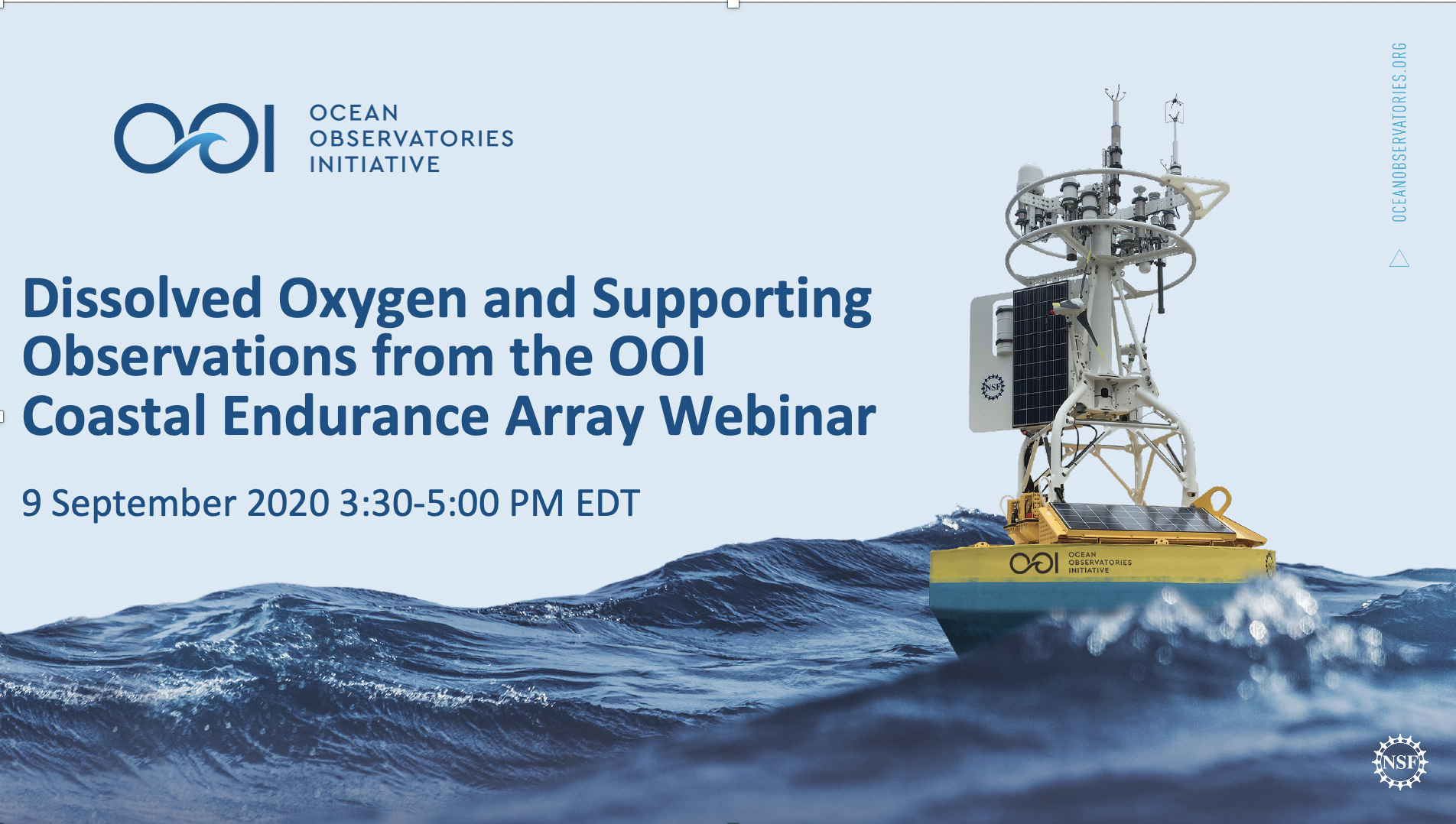 Coastal Endurance Array webinar presenters: Ed Dever, Chris Wingard, Stuart Pearce, Craig Risien, Jonathan Whitefield, and Jon Fram[/caption]
Coastal Endurance Array webinar presenters: Ed Dever, Chris Wingard, Stuart Pearce, Craig Risien, Jonathan Whitefield, and Jon Fram[/caption]
In this webinar, we present dissolved oxygen (DO) data from the Ocean Observatories Initiative’s (OOI) Coastal Endurance Array off Oregon and Washington. DO is recorded on platforms across OOI. These measurements contribute directly to the OOI science goal of understanding ecosystem changes. The Endurance Array measurements contribute specifically to understanding the seasonal development and synoptic variability of hypoxia. DO measurement platforms on EA include moorings, gliders, and profilers.
The webinar will be presented in four pre-recorded sections with a live Q and A following each section. In part one, we will provide an overview of OOI DO measurements across OOI. The remaining three parts will cover surface mooring time series, glider measurements, and profiler measurements respectively. For each of these platforms, we will describe the sampling, review quality control procedures and issues, and present example plots. We will focus on recent data, including telemetered data collected since the latest Endurance cruise in July 2020. We will present the DO time series, along with related observations of wind velocity and ocean temperature.
Please register in advance for this webinar here. After registering, you will receive a confirmation email containing information about how to join the webinar.
The webinar sections will be posted to oceanobservatories.org. Pre-registered webinar participants can sign up for follow-up discussions on accessing these OOI data on 10 September. Individuals can also contact the OOI HelpDesk and set up similar discussions at a later date.
Read More

